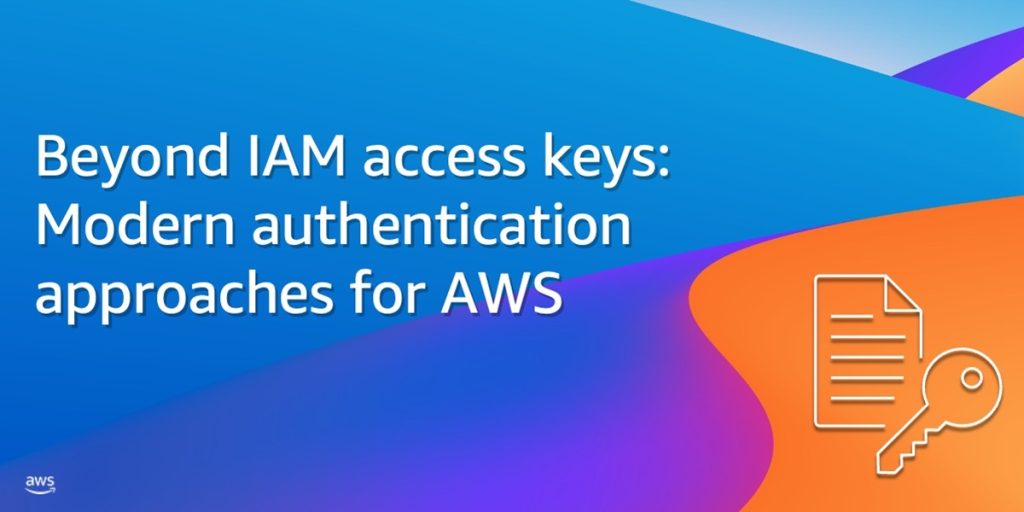AWS Security Blog
Tag: Devops
Beyond IAM access keys: Modern authentication approaches for AWS
When it comes to AWS authentication, relying on long-term credentials, such as AWS Identity and Access Management (IAM) access keys, introduces unnecessary risks; including potential credential exposure, unauthorized sharing, or theft. In this post, I present five common use cases where AWS customers traditionally use IAM access keys and present more secure alternatives that you […]
Accelerate security automation using Amazon CodeWhisperer
In an ever-changing security landscape, teams must be able to quickly remediate security risks. Many organizations look for ways to automate the remediation of security findings that are currently handled manually. Amazon CodeWhisperer is an artificial intelligence (AI) coding companion that generates real-time, single-line or full-function code suggestions in your integrated development environment (IDE) to […]
Strengthen the DevOps pipeline and protect data with AWS Secrets Manager, AWS KMS, and AWS Certificate Manager
In this blog post, we delve into using Amazon Web Services (AWS) data protection services such as AWS Secrets Manager, AWS Key Management Service (AWS KMS), and AWS Certificate Manager (ACM) to help fortify both the security of the pipeline and security in the pipeline. We explore how these services contribute to the overall security […]
Introducing IAM Access Analyzer custom policy checks
July 12, 2024: AWS has extended custom policy checks to include a new check called Check No Public Access. This new check determines whether a resource policy grants public access to a specified resource type. In addition to this new check, there has been an update to the existing Check Access Not Granted check. The […]
Implement an early feedback loop with AWS developer tools to shift security left
February 7, 2024: This post has been updated to reflect the the CloudFormation changes for AWS Cloud9 instances requiring an ImageId for deployment as of December 4th 2023. Refer to the AWS Cloud9 documentation for further details. Early-feedback loops exist to provide developers with ongoing feedback through automated checks. This enables developers to take early […]
Automate and enhance your code security with AI-powered services
Organizations are increasingly embracing a shift-left approach when it comes to security, actively integrating security considerations into their software development lifecycle (SDLC). This shift aligns seamlessly with modern software development practices such as DevSecOps and continuous integration and continuous deployment (CI/CD), making it a vital strategy in today’s rapidly evolving software development landscape. At its […]
Enable external pipeline deployments to AWS Cloud by using IAM Roles Anywhere
June 10, 2024: In February 2024, the workload identity federation feature for Azure DevOps became generally available. This feature is a native way to manage authentication between Azure DevOps and your AWS accounts. October 3, 2023: We updated this post to include the requirement for AWS Toolkit for Azure DevOps in the walkthrough. Continuous integration […]
Validate IAM policies by using IAM Policy Validator for AWS CloudFormation and GitHub Actions
April 15, 2024: AWS has launched two new GitHub Actions that can be used to simplify some of the steps covered in this blog post. Click here to learn more abbot the new GitHub actions for AWS CloudFormation and HashiCorp’s Terraform. In this blog post, I’ll show you how to automate the validation of AWS […]
Streamlining evidence collection with AWS Audit Manager
In this post, we will show you how to deploy a solution into your Amazon Web Services (AWS) account that enables you to simply attach manual evidence to controls using AWS Audit Manager. Making evidence-collection as seamless as possible minimizes audit fatigue and helps you maintain a strong compliance posture. As an AWS customer, you […]
Validate IAM policies in CloudFormation templates using IAM Access Analyzer
In this blog post, I introduce IAM Policy Validator for AWS CloudFormation (cfn-policy-validator), an open source tool that extracts AWS Identity and Access Management (IAM) policies from an AWS CloudFormation template, and allows you to run existing IAM Access Analyzer policy validation APIs against the template. I also show you how to run the tool […]









